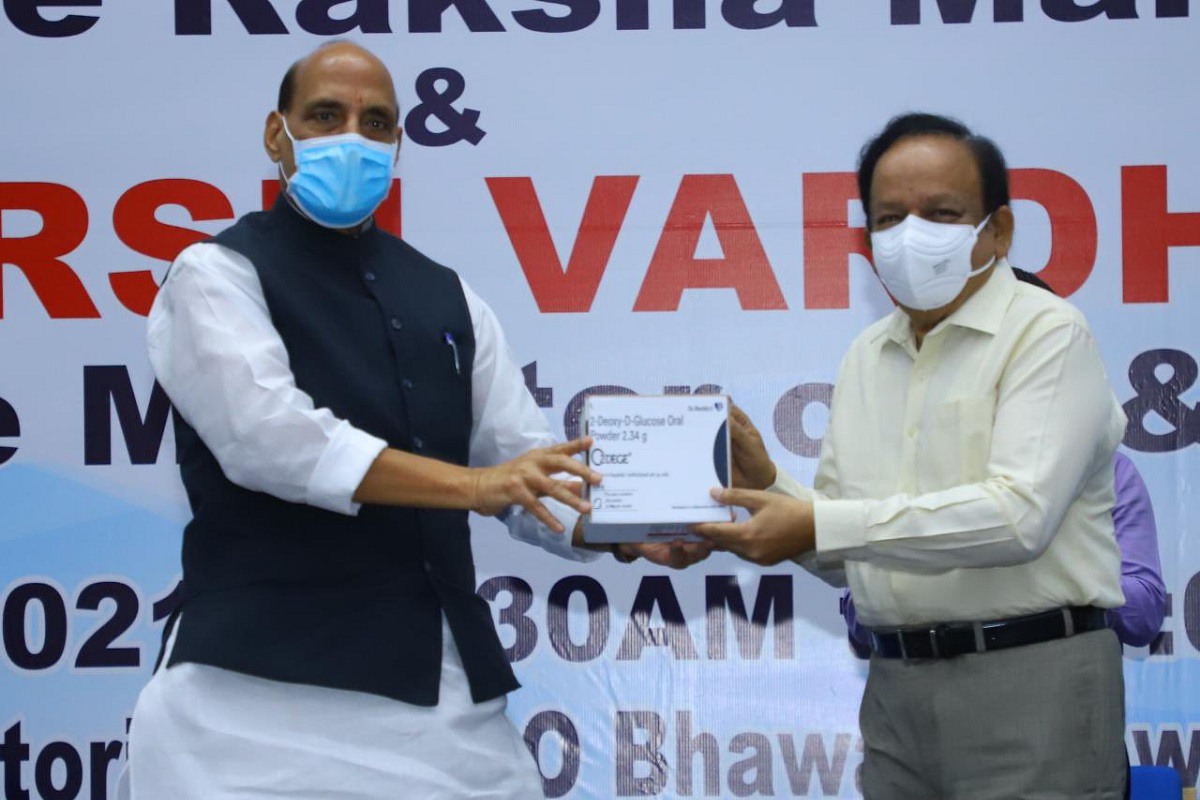INMAS Hosts International Conference on Space Radiation and Human Space Missions
The three-day conference brings together leading experts to discuss the challenges and advancements in space radiation research.
As per reports, nearly 10,000 doses of DRDO 2DG Covid-19 drug will be distributed to hospitals in the national capital.

(Image: Twitter/@RajnathSingh_in)
The first batch of anti-COVID-19 drug 2-DG, developed by the Defence Research and Development Organisation (DRDO) was rolled out on Monday following the official release by Defence Minister Rajnath Singh and Health Minister Harsh Vardhan on Monday.
As per reports, nearly 10,000 doses of DRDO 2DG Covid-19 drug will be distributed to hospitals in the national capital.
Advertisement
The drug has been developed by DRDO’s Institute of Nuclear Medicine and Allied Sciences (INMAS) in collaboration with Dr Reddy’s Laboratories. Earlier this month, the Drugs Controller General of India (DGCI) approved the 2-deoxy-D-glucose (2-DG) drug for emergency use as an adjunct therapy in moderate to severe Covid patients.
Advertisement
Releasing the drug along with Health Minister Harsh Vardhan, Defence Minister Rajnath Singh said 2-deoxy-D-glucose (2-DG) has brought a “new ray of hope” in the treatment of COVID-19 patients and exuded confidence that it would be effective.
Vardhan stated that the recovery time from COVID-19 infection and oxygen dependency will be reduced by 2-DG.
“With the support of DRDO and in the leadership of Union Defence Minister Rajnath Singh, this (anti-COVID drug 2DG) may be our first indigenous research-based outcome to fight against COVID-19. It will reduce recovery time and oxygen dependency,” he said.
The drug, notably, comes in powder form in a sachet and is taken orally by dissolving it in water.
The ministry of health and family welfare stated that in efficacy trends, patients treated with 2-DG showed a faster symptomatic cure than the standard of care (SoC) on various endpoints.
As per a statement by the Defence Ministry, the drug accumulates in the virus-infected cells and prevents the growth of the virus by stopping viral synthesis and energy production. It added that the medicine’s selective accumulation in virally infected cells makes it unique.
Advertisement